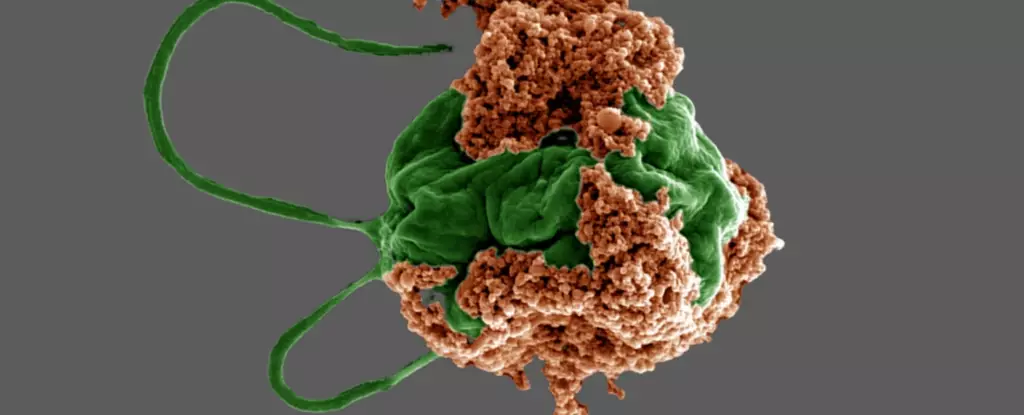The field of cancer treatment has always been challenging, particularly when it comes to metastases in organs such as the lungs. Conventional chemotherapy often proves to be inefficient in directly targeting tumors in the lungs, leading to limited success in treatment outcomes. However, a groundbreaking approach using biohybrid microrobots may change the landscape of cancer treatment.
Developed by researchers from the Wang lab and Zhang Research Group at the University of California, San Diego, biohybrid microrobots are microscopic objects made from a combination of natural and synthetic materials. Unlike traditional rigid metallic or polymeric microrobots, these biohybrid versions utilize microalgae as a key component. Microalgae possess the unique ability to move autonomously through organs like the lungs using flagella, providing a highly effective means of drug delivery.
One of the most notable biohybrid microrobots developed by the researchers is the algae-NP(DOX)-robot. This innovative microrobot combines live green microalgae, Chlamydomonas reinhardtii, with nanoparticles coated in red blood cell membranes. The use of red blood cell membranes serves as a natural camouflage, enhancing the microrobot’s biocompatibility and protecting it from the immune system’s attacks. Within these nanoparticles lies the chemotherapy drug doxorubicin, providing a targeted approach to treating lung metastases.
In animal studies involving mice with lung metastases, the algae-based microrobots demonstrated a significant improvement in drug delivery to the lungs. By administering the microrobots through the trachea, researchers were able to directly transport the drug to the lungs, minimizing side effects on other organs. The microrobots were able to swim and distribute the drug across lung tissue, evading immune cell destruction and allowing for gradual drug release from the nanoparticles.
Compared to traditional drug delivery methods, the biohybrid microrobots accumulated in higher concentrations and remained in the lungs for an extended period, leading to improved treatment outcomes. Mice treated with the algae-based microrobots experienced a 40% increase in median survival time, showcasing the potential of this approach in treating lung-related diseases. The microrobots are eventually broken down by immune cells into non-toxic components and eliminated from the body, making them a safe and effective treatment option.
The use of biohybrid microrobots in cancer treatment opens up new possibilities for targeted drug delivery and enhanced therapeutic outcomes. While the technology is still in the preclinical stage, researchers are exploring its potential in treating other lung-related diseases such as cystic fibrosis and idiopathic pulmonary fibrosis. By integrating additional motion control strategies like magnetic guidance or ultrasound trapping, the efficacy of drug delivery could be further enhanced, paving the way for advanced bioengineered cancer treatments.
The development of biohybrid microrobots represents a significant breakthrough in cancer treatment, particularly in targeting lung metastases. By leveraging the unique capabilities of living microalgae and cell membrane-coated nanoparticles, researchers have demonstrated the potential to revolutionize drug delivery and improve treatment outcomes in pulmonary diseases. While there is still work to be done before these biohybrid microrobots are widely available in clinical settings, the groundwork has been laid for a promising future in bioengineered cancer treatments.


Leave a Reply